


Tell Me True, Tell Me Why
compiled by Mike McInnis

Fully understanding The Final Cut can be quite challenging. References are sometimes obscure, differing perspectives are presented, and the setting shifts from 1942 to 1982 without warning. Comparisons between World War II and the contemporary Falkland conflict are made again and again.
Below is a pictorial illustrating various aspects of the album using vintage photographs from the '40s and the '80s. Many of the photographs are courtesy of Steven Johnson, whose website features thousands upon thousands of historical photographs, including a fascinating look at the Falkland conflict, military history, and even some Pink Floyd concert photos. Well worth a look.
When I was their age all the lights went out/There was no time to whine and mope about
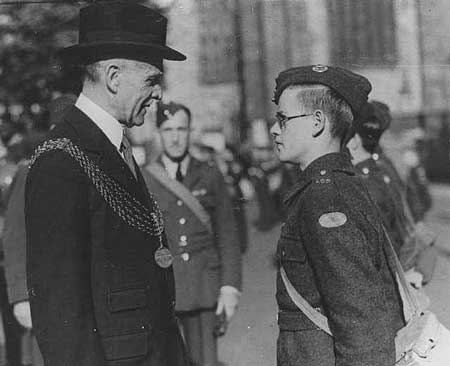 |
| Plymouth's Lord Waldorf Astor inspects a very young member of the Plymouth Air Force Cadets. |
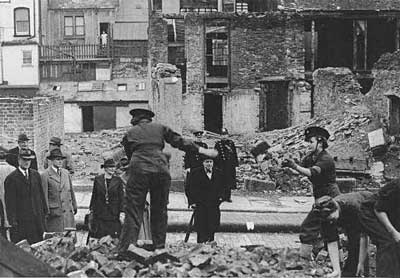 |
| All were expected to pitch in and support the war effort, even in helping to salvage bombed-out buildings. |
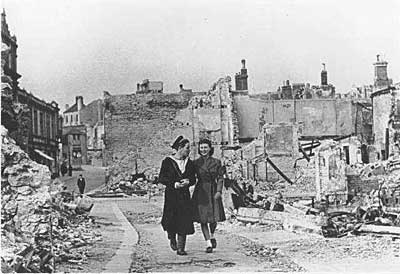 |
| Those at home learned to make do under trying circumstances as horrific wartime conditions became the norm. |
And even now part of me flies/Over Dresden at angels one five
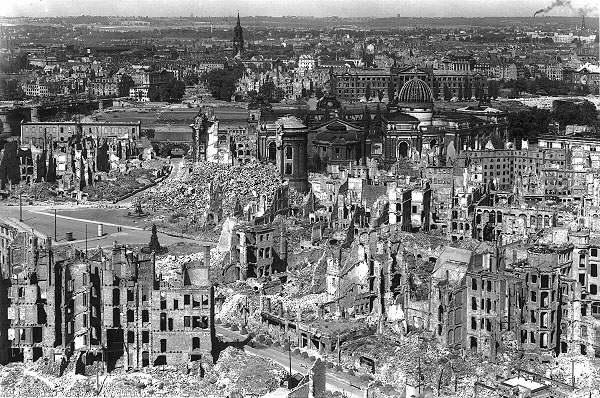 |
| Called the 'Florence of the North,' Dresden, Germany was known for its art and architecture. Its choice as a target for Allied bombings in February 1945 was not based on tactical or strategic motives, but rather as a blow to German morale. Much of the once-beautiful city was reduced to rubble in just two days. |
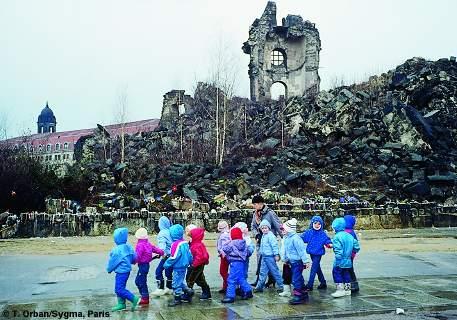
Get your filthy hands off my desert!
 |
| A Chinook helicopter takes off from a desolate Falklands field. |
Galtieri took the Union Jack/And Maggie over lunch one day/Took a cruiser with all hands/Apparently to make him give it back
 |
| A landing vessel, laden with supplies, is unloaded on the shore of one of the islands. |
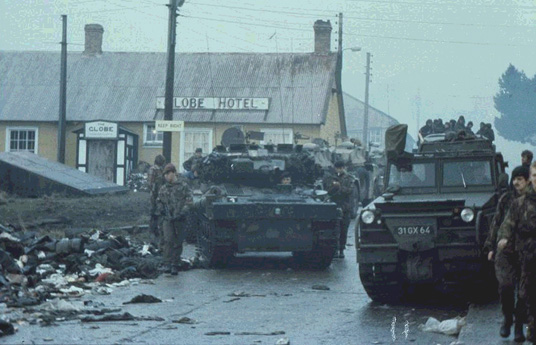 |
| British troops on the move in Port Stanley, on East Falkland Island, probably in early June 1982. |
 |
| Argentine prisoners of war are disarmed. |
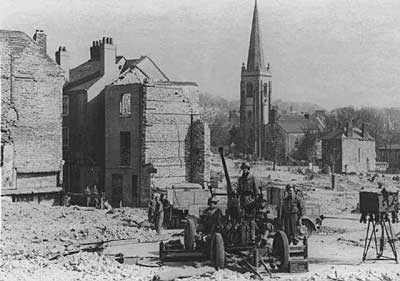 |
| The 40mm Bofors "Ack Ack" gun (above and below) was used both in World War II and in the Falklands conflict. |
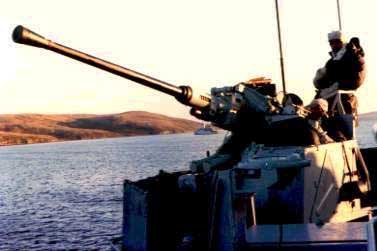
If you negotiate the minefield in the drive
 |
| A minefield lay undisturbed after the end of hostilities in the Falklands. |
When we came back from the war the banners and/Flags hung on everyones door/We danced and we sang in the street and/The church bells rang
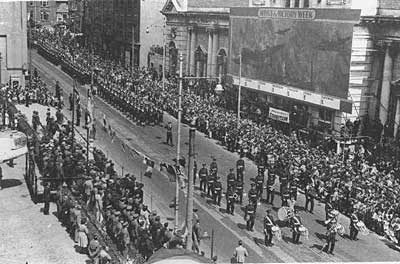 |
| A World War II-era victory parade in the U.K. |
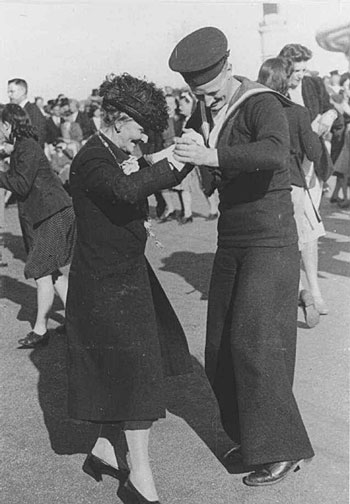 |
| A sailor celebrates with Lady Nancy Astor of Plymouth. |
Although the lyrics refer specifically to troops returning from World War II, things weren't too much different for the sailors and soldiers who returned victorious from the South Atlantic. The photos below were taken at Plymouth's civil salute to the Task Force on November 20, 1982.
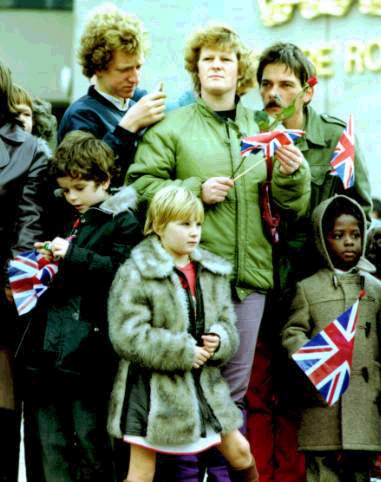
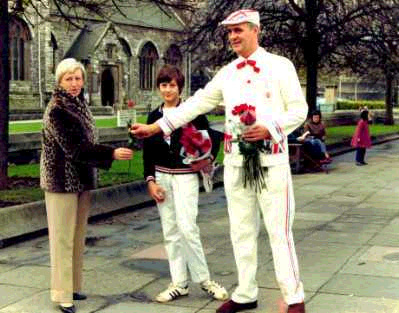

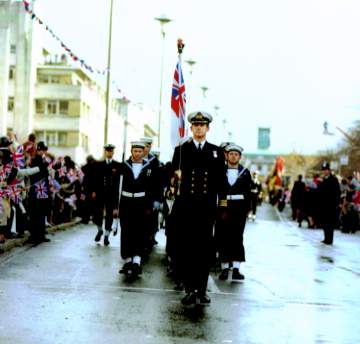
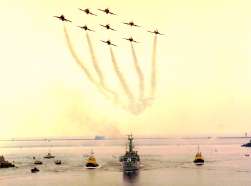 |
| The HMS Arrow is saluted by the Red Arrows upon returning to Devonport on July 7, 1982. |
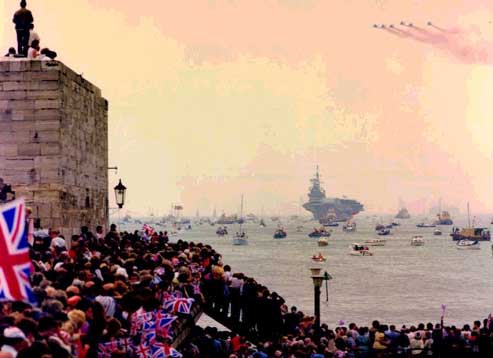 |
| The HMS Hermes returned to Portsmouth on July 21, 1982, to the delight of the assembled crowds, welcoming home their victorious 'heroes'. |
Somewhere old heroes shuffle safely down the street
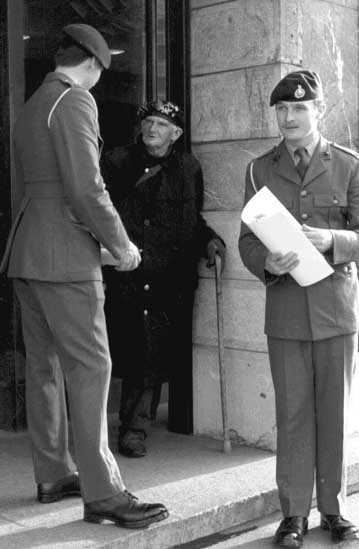 |
| A veteran of wars long past talks with those recently returned from the Falklands. |
We showed Argentina/Now lets go and show these.../Oi, where's the fucking bar, John?
 |
| On the day of the Plymouth celebration in 1982, the traditional ban on servicemen wearing their uniforms in public (due to the risk of terrorism) was lifted, and this group of sailors and civilians enjoyed a rowdy, raucous celebration of the UK's victory. |
If it wasn't for the nips being so good at building ships/The yards would still be open on the Clyde
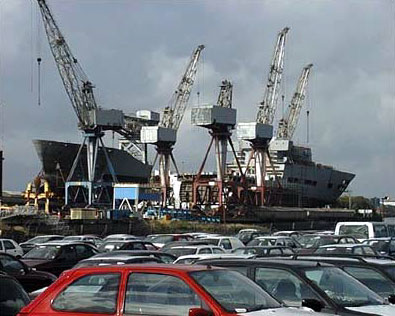 |
| A view of the shipbuilding facilities on the Clyde river in northern England. As it happens, some of the shipyards are still operational. |
Is it for this that Daddy died?
 |
| In 1982, penguins outnumbered people in the Falklands by about 300 to 1. |